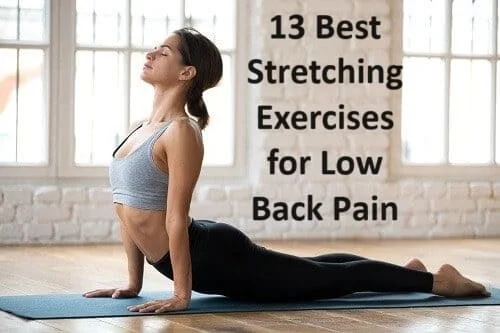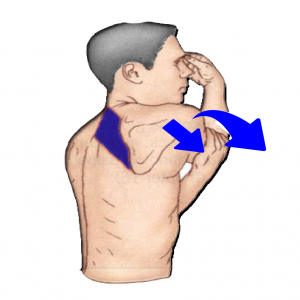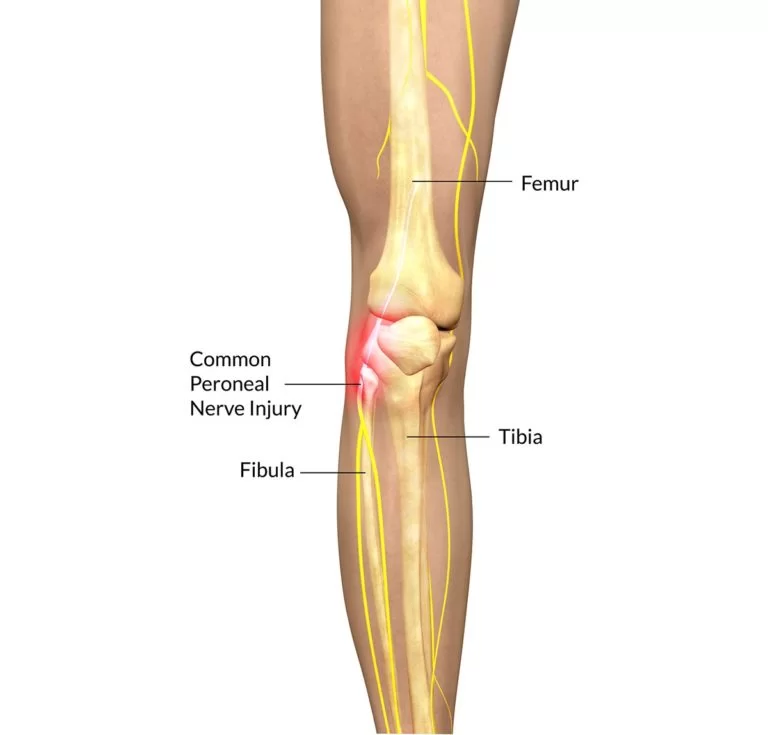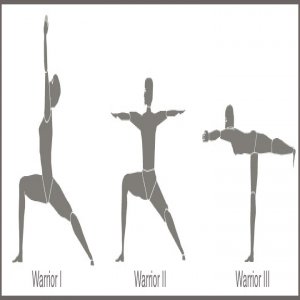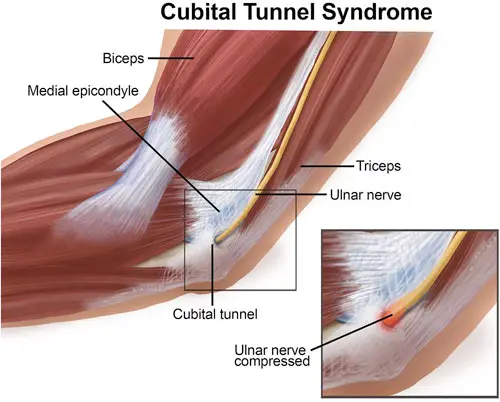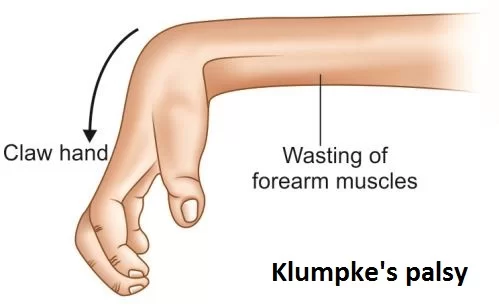13 Best Stretching Exercises for Low Back Pain
Low back pain is a prevalent and often debilitating condition that can significantly impact one’s quality of life. Whether caused by poor posture, sedentary lifestyles, muscle imbalances, or underlying medical conditions, finding effective ways to alleviate and prevent low back pain is crucial for maintaining overall well-being.
While various treatment approaches exist, incorporating targeted stretching exercises into your routine can be a game-changer in managing and preventing low back discomfort. Stretching helps improve flexibility, enhance muscle strength, and alleviate tension in the lower back, offering relief and promoting a healthier spine.
In this article, we will explore a curated selection of the best stretching exercises designed to target the muscles surrounding the lower back. These workouts are easy to add to your regular routine since they are straightforward but effective.
How to Stretch out your Lower Back?
Here is some more detailed, professionally endorsed advice on how to safely get relief:
- It’s essential to see your doctor before starting a new fitness regimen if you’re in pain and to gently stretch your lower back, especially if you have an injury or other health issues.
- Think about whether you are extension-sensitive (pain occurs when you arch backward) or flexion-sensitive (pain occurs when you lean forward). Experts advise exercising particular caution while starting a stretching routine that involves flexion or extension.
- Professionals advise holding each stretch for at least 10 seconds, but ideally 30 seconds or more. The benefits of these exercises to relieve pain increase with their duration.
- Experts suggest putting on relaxing music and utilizing this stretching period as an opportunity to unwind and rejuvenate rather than rushing through the motions.
- Remember to breathe! Although it may sound absurd, doctors claim that paying attention to how you breathe may help you manage any discomfort.
- In general, doctors advise including additional daily exercises, such as walking, in addition to these stretches.
Try these safe and effective lower back stretches now.

- This popular yoga stance releases some of the constricted lower back muscles, which are probably the cause of your pain. Additionally, it can help expand your hips in addition to relaxing your lower back. Extending your knees as widely apart as is comfortable if you feel that your hips are bothering you.
- Performing the child’s pose:
- Starting from the tabletop posture, place your hands exactly under your shoulders and your knees under your hips.
- With your hands flat on the ground, extend your arms in front of you.
- Slowly sit your hips back towards your heels, sinking your head and chest downward while your arms stretch wider and reach for the wall in front of you.
- In order to slightly elevate yourself and minimize the strain on your lower back muscles, lay a pillow under your stomach if you find that this stretch is too great.
- Keep this position for a minimum of 20 to 30 seconds or more.
- Cat/Cow Stretch:
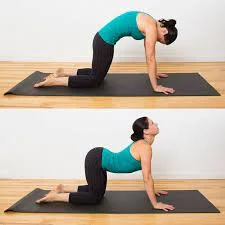
- Building on the child’s pose, this dynamic practice helps stretch constricted muscles and relieve stiffness by moving the low-back muscles in two directions. It can also help enhance overall equilibrium and strengthen the core. The doctor continues, saying to pay close attention to your pelvis, as though you had a tail that you wanted to tuck under you or stick towards the ceiling.
- How to perform a cow/cat stretch:
- Starting from the tabletop posture, place your hands exactly under your shoulders and your knees under your hips.
- In this posture, your spine should be parallel to the floor.
- Then, curve your back, extending your mid-back between your shoulder blades in the same manner that a cat does.
- After five seconds of holding, release tension and let your tummy drop as you gently arch your lower back and maintain this position for an additional five seconds.
- Spend at least 30 seconds repeating these motions.
- The Supine Twist:
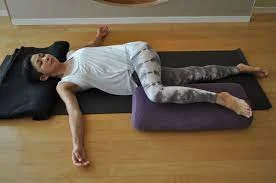
- Stretching your glutes, which can stiffen when you have low back discomfort and eventually cause additional pain, is as beneficial as stretching your lower back. It’s also useful for increasing spinal flexibility generally.
- Performing a supine twist:
- To start, lie on your back with your knees bent and keep your feet flat on the floor.
- Form a T shape with your hands out to the side.
- As you slowly rotate both knees to one side, keep your shoulders on the floor.
- After 20 to 30 seconds, stay in this position, bring your knees back to the centre, and repeat on the opposite side.
- When you spin to each side, lay a cushion or stack of blankets beneath your knees if the stretch is too much for you.
- Knee-to-Chest Stretch:
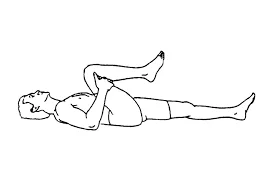
- This stance lengthens and extends tight low back muscles, much like the other stretches on this list, according to Hashish. If the youngster is posing too much on their hands and hips, this is a terrific option.
- The knee-to-chest stretch technique:
- To start, lie on your back with your knees bent & your feet flat on the ground.
- Put your hands just beneath your kneecaps or behind your knees.
- Using your hands to gently pull your knees, slowly raise both of your knees to your chest.
- After holding this posture for 20 to 30 seconds, try moving your hips up and down and side to side to help massage your lower back.
- After that, get back to where you started.
- The Pelvic Tilt:
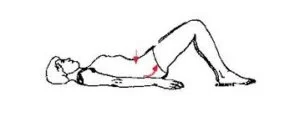
- You may feel as though your pelvic region is immobile when you have lower back discomfort. By easing sciatica and bolstering your abdominal muscles, this stretch can help you gradually begin to regain some movement in this area.
- The first step in doing a pelvic tilt is to lie on a yoga mat with your knees bent and your feet flat on the ground.
- Try to maintain your lower back in a neutral position by relaxing it; if you lay the top of your palm beneath your back, you should feel a tiny curvature there.
- Activate your core muscles, and then flatten your lower back on the floor by slightly tilting your pelvis upward.
- Do this twelve to fifteen times.
- Supine Figure 4 Stretch:
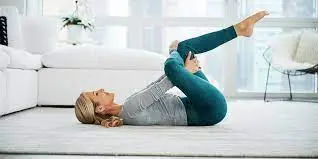
- This traditional yoga stance is beneficial for both low back massage and hip opening. This posture extends your piriformis and outer glutes, both of which can contribute to a stiff lower back. It is a useful stretch to improve hip mobility & reduce discomfort.
- How to perform a figure of supine Four stretches:
- Lie on your back on a yoga mat with both knees bent and feet placed on the floor.
- Raise your right leg and place it over your left thigh, flexing your right foot.
- Hand-to-Big-Toe Stretch in Recline (Supta Padangusthasana):
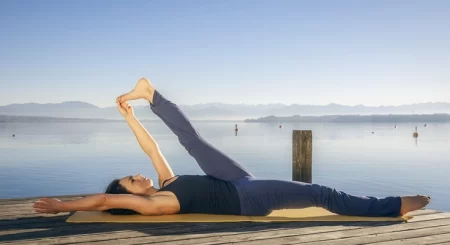
- Your inner thighs, or your hamstrings and adductors, might be tight sources of lower back pain. This position stretches everything out by freeing up the backs of the legs, ankles, calves, and hamstrings. Avoid this stretch if you notice that one leg is experiencing shooting pain down it, as it might place too much strain on the leg.
- How to perform a hand-to-big-toe stretch while reclining:
- Lift your right leg towards your face while supine lying on your back.
- Place your hands behind your thigh or calf, depending on how tight your hamstrings feel.
- Keep your opposing hip planted and your opposite leg engaged.
- You should maintain your head and shoulders on the ground.
- Ten breaths should be held.
- Now, let your right leg drop out to the right while keeping your opposite hip planted.
- You should only extend your right leg out to the side as far as possible without causing your opposite hip to rise.
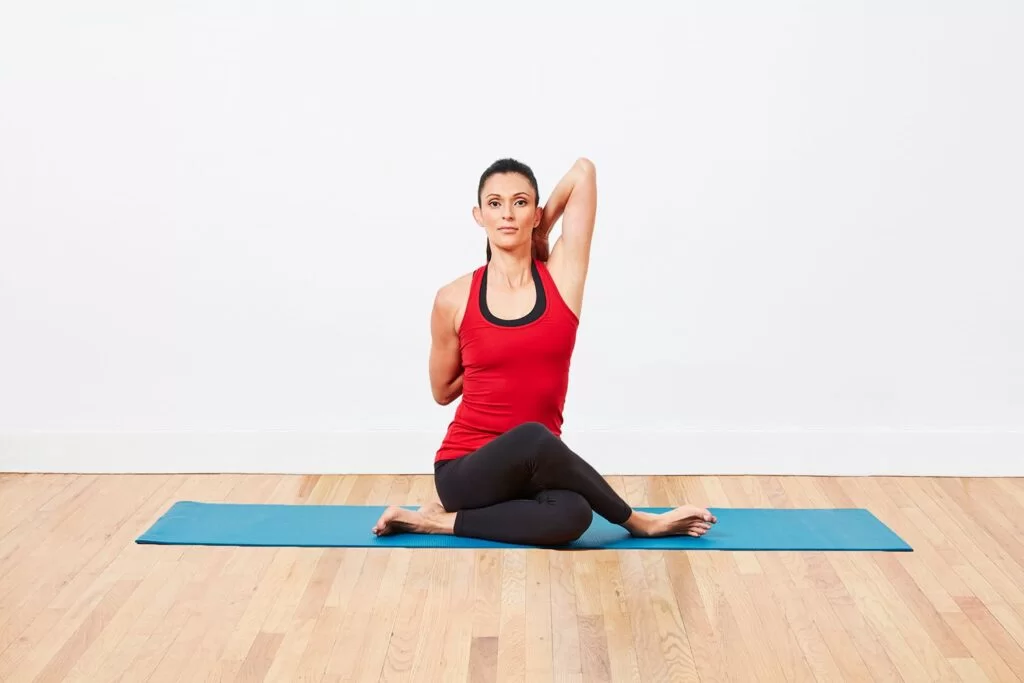
- This stance helps to stretch your outer glutes, which can become tight and create low back discomfort. Additionally, it can relieve shoulder, chest, ankle, and hip discomfort.
- How to strike the stance of the cow:
- With your left knee pointed directly in front of you, move your left heel towards your right glute while seated.
- Now stack your knees so they are both pointing straight forward by placing your right leg on top of your left.
- If they don’t fit exactly on top of one another, that’s acceptable.
- With your toes pointed backward, place your feet on either side of yourself.
- Sit upright to maintain a long spine, or take a small bend forward to heighten the effect.
- Bridge Pose:
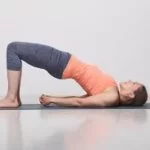
- By extending through the sit bones, you can activate the lower section of your gluteus maximus, which helps to support your lower back and alleviate discomfort and tension.
- Similarly, by softening around your sacrum, you may release some of the tension around your lower back. It strengthens the back, buttocks, and hamstrings and is a great way to stretch the chest and hips.
- Bridge pose:
- While lying on your back, place both feet on the yoga mat, bend your knees, and bring them together.
- Make sure your heels are in close proximity to your glutes and your feet are hip-width apart.
- Press into your feet to elevate. your hips.
- From here, make an effort to extend your sit bones towards your knees and soften the area surrounding your sacrum.
- For 30 seconds, hold.
- Forearm Plank:
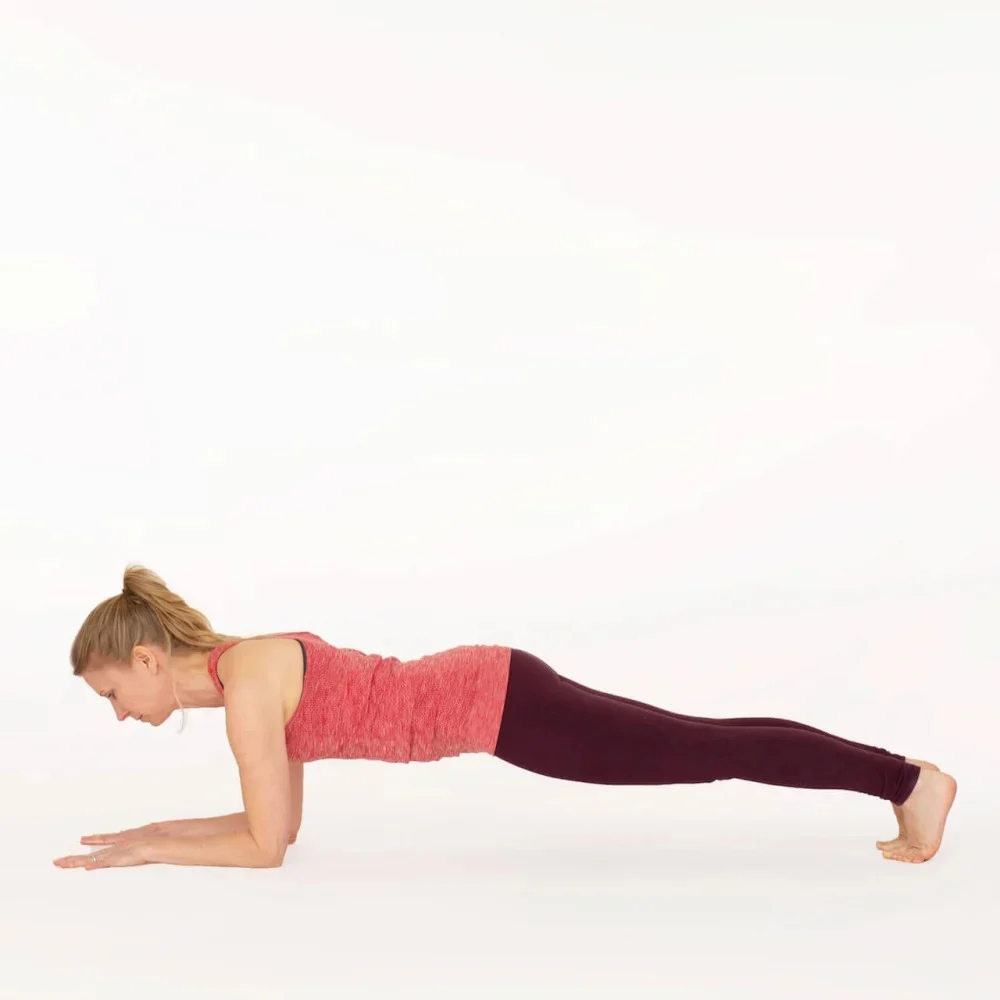
- Using this plank variant helps strengthen the muscles surrounding your lower back, which will help relieve some of the strain on it.
- The forearm plank technique:
- Assume a push-up stance and place your forearms on the mat just below your shoulders.
- You can either bring your forearms parallel to one another or interlace your hands, depending on how your shoulders feel.
- Put your heels into your core and kick.
- Start with 30 seconds and work your way up to a minute of holding.
- Pigeon Pose:
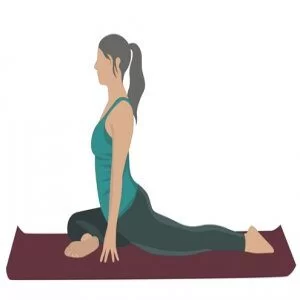
- An extended half-pigeon pose is one of the finest methods to loosen up the hips, as tight hip flexors can contribute to lower back discomfort. A doctor observes that it’s a useful hip stretch and mobility exercise. In an 8-week study, individuals with chronic back pain who practiced yoga, including pigeon posture, reported a 9% reduction in pain.
- Pigeon pose:
- From Downward-Facing Dog, take a deep breath and raise your right leg to the sky to do Three-Legged Downward-Facing Dog.
- Bend your right knee and bring it up to your right wrist on your next exhale.
- Depending on how flexible your hips are, your right shin may not be parallel to the top of the mat as you lower it; that’s just acceptable!
- Return your left leg to the end of your mat with a gentle movement.
- You may either drop your head onto the tops of your hands and bend your arms at the top of your mat, or you can stay here.
- Take seven or ten deep breaths.
- Ardha Matsyendrasana (Half Lord of the Fishes):
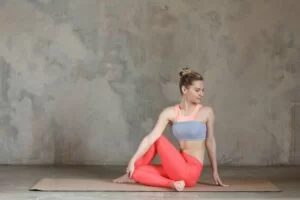
- Ardha Matsyendrasana, sometimes referred to as the seated twist posture, aids people with lower back discomfort with their posture and spinal mobility. When twisting when experiencing lower back discomfort, keep in mind that a little goes a long way and avoid letting your lower back collapse.
- Performing the half-lord of the fish pose:
- Sit with your legs spread out in front of you (dandasana).
- Raise your right leg and plant your foot next to your left knee on the ground.
- With your left foot on the outside of your right hip, flex your left leg.
- Breathe in as you find length through your spine and ground down through your hip bones.
- With your right hand behind you, slightly rotate while hooking your left elbow on your right knee.
- Take 5 to 8 deep breaths.
- Happy Baby (Ananda Balasana):
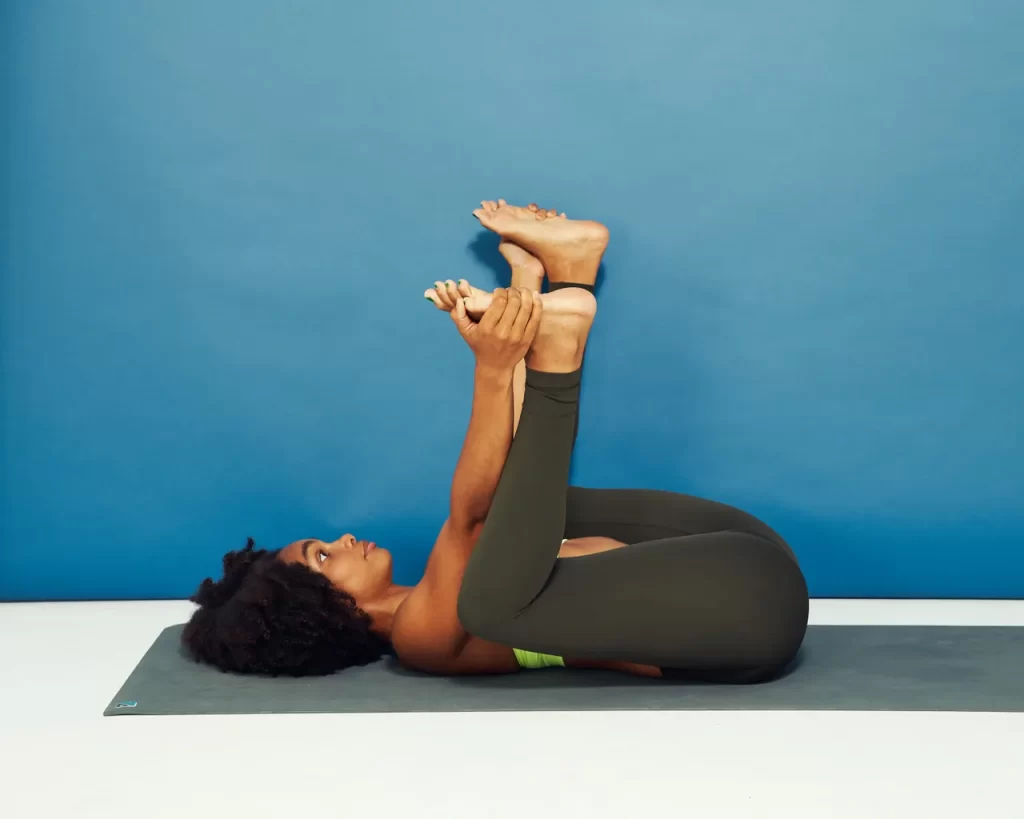
- Happy Baby is a rehabilitative pose that helps you relax and opens up your hips to relieve lower back discomfort. Additionally, it aids in relieving tension by relaxing the muscles in your back and neck, as well as your shoulders. It can be a useful tool for groin stretches. If you find it difficult to reach your toes, the doctor advises using a strap.
- Happy Baby Posture:
- Bend your knees till your heels seem like they’re stamping the ceiling while lying on your back on your mat.
- Using both hands, grasp the outside of your feet, then hook your elbows onto the insides of your knees.
- Give your lower back a gentle massage by flexing your heels into your hands and remaining still, or you may rock back and forth.
What causes lower back pain?
The majority of low back pain is acute or transient, lasting little more than four weeks. Your pain qualifies as chronic if it lasts longer than 12 weeks.
People of all ages have low back pain, both acute & chronic. However, for a variety of reasons, your likelihood of developing low back pain increases with age. Research indicates that as one ages, the flexibility of their muscles, ligaments, spinal discs, and other soft tissues decreases. Back pain may result from these muscular imbalances and mobility restrictions.
In addition to age-related changes, lower back pain can also result from ailments or injuries. Typical reasons include:
- Suffering from a strain on your muscles and ligaments in your spine is the primary cause of 70% of low back pain. Back pain can result from excessive lifting, overusing the same muscles, and extended periods of sitting.
- Herniated disc: Lower back pain may result from a herniated disc. Additionally, it may result in sciatica, or leg discomfort and numbness. Your spine’s disc material bulges, exerting pressure on your spinal cord and nerves, resulting in the disorder.
- The fancy word for arthritis, which mostly affects the spine, is ankylosing spondylitis. It may result in stiffness and low back discomfort that gets worse at night.
- Nerves and the spinal cord have less room as the spinal canal narrows, a condition known as spinal stenosis. In addition to causing pain, numbness, and tingling down the legs, spinal stenosis also results in low back discomfort.
Conditions that stretch may help
Some stretches are beneficial for reducing lower back pain.
One of the most frequent causes of medical visits and work absences is lower back pain. These problems may result in either temporary or permanent discomfort and mobility difficulties.
Inadequate posture or extended periods of inactivity might result in lower back strain and pain. Other potential reasons for lower back issues include:
- Injuries: Back pain can originate from sprains or strains.
- Congenital abnormalities: Scoliosis is one of the disorders that affect the spine from birth.
- Degenerative conditions: Some disorders, including arthritis, can deteriorate over time and harm the spine.
- Nerve issues: The spinal cord is made up of nerves. Lower back issues might result from some ailments that impact these nerves, such as sciatica.
- Pregnancy: The increasing foetus’s weight might compress the lower back and cause discomfort.
How does stretching help with lower back pain?
Exercises that stretch and strengthen your core can help you maintain a healthy back.
Exercises for strengthening and stretching your back, hamstrings, hip flexors, and glutes may be beneficial.
- Increase blood flow to your back’s soft tissues and joints.
- Boost your range of motion and flexibility.
- Reduce lower back pain
- Maintain a functional gait.
- Keep your spine’s natural curvature.
- Boost your posture.
- Reduce nervousness
Can I stretch my lower back if it hurts?
Some people find that stretching gently helps ease back pain. But it would be wise to consult a doctor to find out why you’re hurting if doing simple stretches hurts.
To identify the source of your back pain, a physician could advise imaging tests like an X-ray. Further therapy may be necessary for some reasons. This might consist of:
- Medication, such as painkillers, muscle relaxants, and anti-inflammatory
- Physical intervention
- Steroid injections, among other injections
- Surgery may be necessary in rare instances when discomfort lasts longer than a year.
Summary
Pain in the lower back affects many people.
There are tried-and-true methods for preventing and reducing lower back discomfort, including stretching and regular exercise.
Stretches that target the hamstrings and abdominals can help release tension in the lower back. You can attempt several exercises to relieve persistent discomfort, such as the supported bridge, pelvic tilt, and trunk rotation.
FAQ
Can stretching reduce lower back pain?
By strengthening weak muscles, stretching can help your body reduce discomfort. Stretching is a useful treatment for piriformis syndrome and can help reduce and avoid back stiffness and spasms.
Which three exercises are the best for back pain?
Walking, riding, and swimming are among the exercises that might help ease back pain. Work your way up to longer sessions by starting with shorter ones. If you have back discomfort, try swimming, where the water supports your body.
What’s the quick fix for low back pain?
After a back injury, it is better to apply cold compresses or an ice pack rather than heat, as they can prevent or lessen swelling and ease discomfort by numbing the affected area. However, using heating pads or a hot water bottle on your back for about 48 hours after the start of back discomfort may be beneficial.
Is stretching beneficial for back pain?
Stretching has several advantages, such as easing tension in the muscles that support the spine, which can exacerbate pain from a variety of back pain disorders. enhancing general mobility and range of motion. lowering the possibility of back pain-related impairment.
Should I perform daily lower back stretches?
In order to avoid low back discomfort, it’s important to keep your body moving and to stretch frequently. Muscles remain ‘loose’ and robust via stretching. Doing three easy stretches in the morning is a terrific way to get yourself ready for the day.
Reference
- Fletcher, Jenna. Causes and Treatment of a Stiff Lower Back. 25 Feb. 2020, www.medicalnewstoday.com/articles/tight-lower-back#summary.
- Rabbitt, Meghan, and Arielle Weg. “13 Best Lower Back Stretches, According to Experts.” Prevention, 13 Dec. 2023, www.prevention.com/fitness/a20506161/5-stretches-to-ease-your-lower-back-pain.
- Jeon, Hannah. “8 Best Lower Back Stretches to Relieve Back Pain, According to Orthopedic Experts.” Good Housekeeping, 5 Oct. 2022, www.goodhousekeeping.com/health/fitness/a41356534/lower-back-stretches.
- GoodRx – Error. www.goodrx.com/well-being/movement-exercise/stretches-lower-back-pain.
- Van De Walle Ms Rd, Gavin. “8 Simple Stretches to Relieve Lower Back Pain.” Healthline, 10 Mar. 2023, www.healthline.com/nutrition/stretches-for-lower-back-pain#1.-Knee-to-chest-stretch.
- Cronkleton, Emily. “7 Lower Back Stretches to Reduce Pain and Improve Mobility.” Healthline, 7 Nov. 2023, www.healthline.com/health/lower-back-stretches#takeaway.

